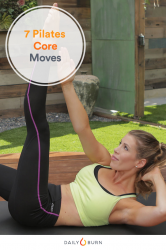“I use these other sports as forms of working out,” Lenny says. “It keeps training creative and exciting. It doesn’t get stale. As soon as it gets stale, you lose that motivation.”
While to a certain extent all of what Lenny does—and he currently competes in eight sports—involves riding waves, making the sports similar enough they can feed off one another and allowing him to take something he’s learned from one sport and move it into another. But the differences allow him to cross-train and use different muscles through all the sports.
RELATED: Why Hamstring Injuries Are So Common in NFL Players
Take wind surfing. Lenny says that sport builds his strength and core muscles for stand-up paddle boarding because the constant force in the sail forces him to pull and hold onto the rig while jumping.
With so much going on, Lenny says the hardest part is saying no. He could compete every weekend of the year multiple times over. “I choose the ones I like to do and choose the biggest races and biggest events,” he says. For now, his competitive focus is on stand-up racing and big-wave surfing’s world tour. “I try not to oversaturate to perform the best in the events that I do.”
While the on-water training takes focus, he says the training for stand-up racing requires a more stringent plan, using endurance paddling and sprint intervals along with more mellow days of paddling technique training to keep him sharp. But that doesn't mean Lenny isn’t flexible when he gets a call that he needs to be in Mexico in 72 hours for a big-wave competition. “To go from paddling in controlled flat water to death-defying waves that are unpredictable, that takes a lot of feeling and concentration,” he says. “It is just a different approach and you have to stay very adaptable.”
Lenny does hit the gym for an hour three times a week for high intensity work or recovery, but he feels like training using the sport is the best way to build strength specific for that discipline. His routine, though, depends on how he wakes up. And where his heart rate stands.
Every day he wakes up and checks his heart rate, using the number to determine how hard he’ll push himself that day. When Lenny takes to the water, he doesn’t stop monitoring his heart rate. Or applying it to his training. “If I feel I am pushing hard and my heart rate says otherwise, I push harder,” he says. “Your heart isn't going to lie. If I’m working too hard, I switch up equipment or technique. It is super important to know how you are feeling. I’ve gotten so used to knowing what my heart rate feels like that I don't even need to look at a heart-rate monitor…






 D5 Creation
D5 Creation
Comments are Closed